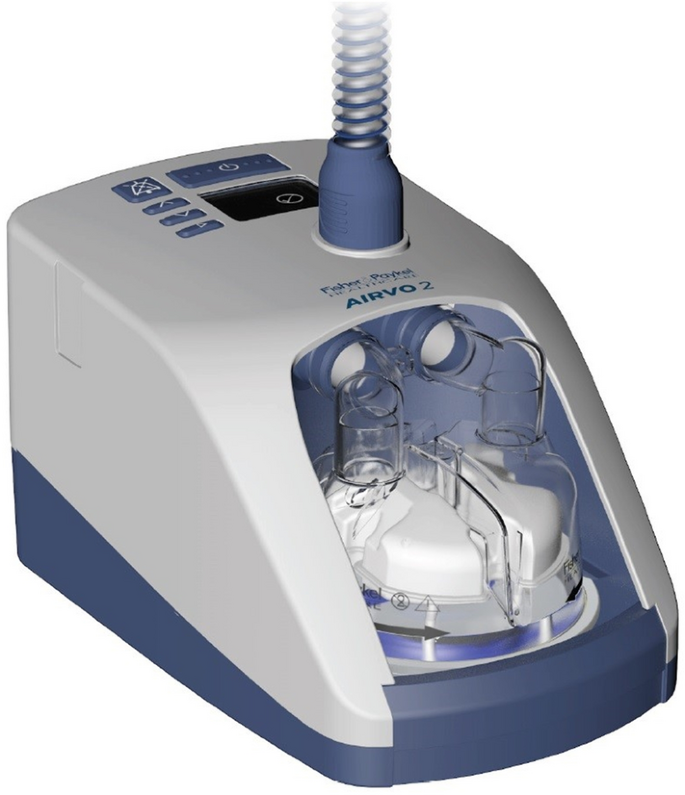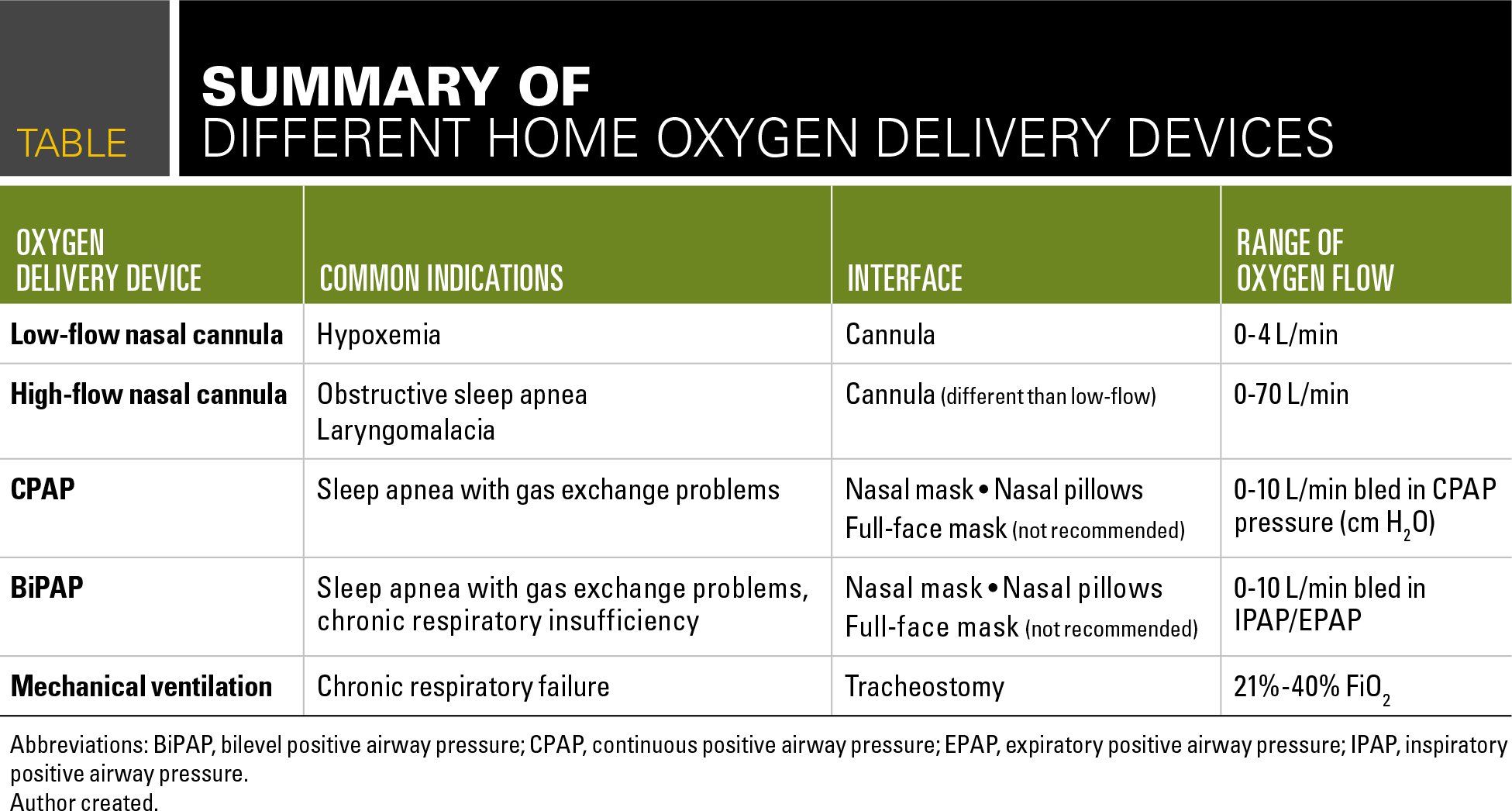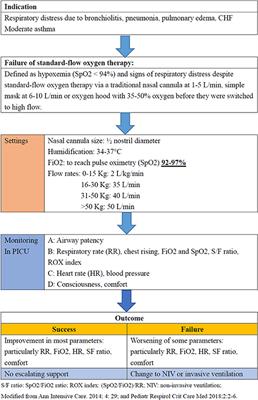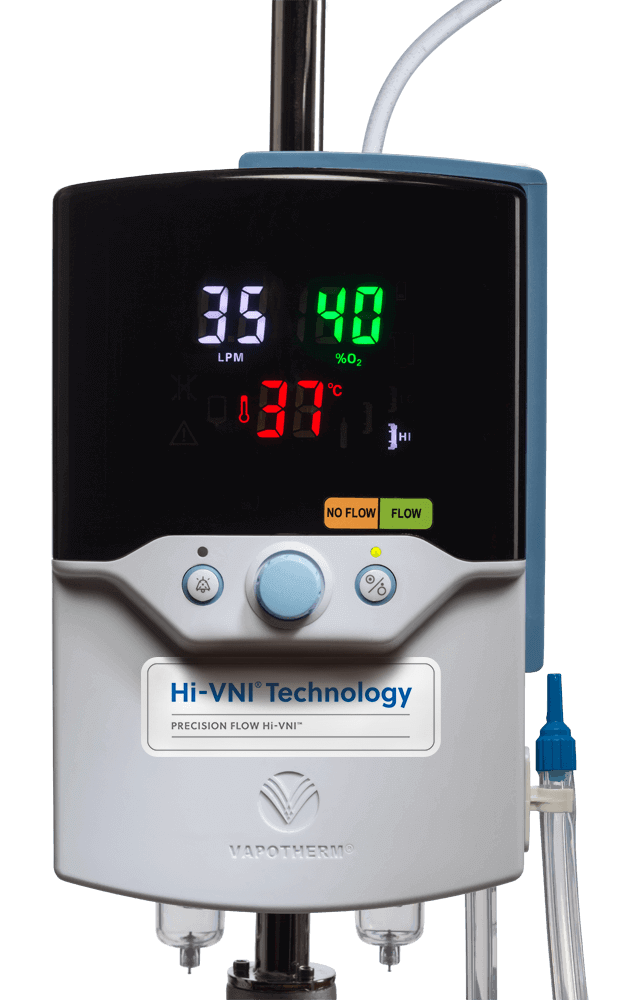heated high flow oxygen levels
High-flow nasal cannula HFNC oxygen therapy comprises an airoxygen blender an active humidifier a single heated circuit and a nasal cannula. Fraction of inspired oxygen FiO2 of 21 to 98 relative humidity of 95 to 100 a flow rate of 15 to 60 Lminute.
The High Flow Nasal Cannula In The Emergency Department Emupdates
The gas is heated and humidified through an.

. An explorative study was undertaken using retrospective chart review to identify characteristics of adult patients who received HHHFNO in a tertiary adult ED between January. Oxygen therapy can be delivered using a low flow or high flow system. The high-flow technique delivers a mixture of heated and humidified oxygen and air through the nose at high flow rates while conventional oxygen therapy consists of a limited flow of oxygen through nasal prongs cannula or masks.
HFNC was first used in preterm neonates and pediatric care. The device can deliver. In recent years nasal cannulae designed to administer heated and humidified airoxygen mixtures at high flows up to 60 Lmin have been gaining popularity.
Such conventional systems do not deliver a reliable fraction of inspired oxygen and are generally poorly tolerated for prolonged periods due to inadequate warming and humidification of inspired gas. The constant flow rate of gas in the HFNC system generates variable pressures in airways according to the patients breath effort. The low and the upper range of the concentration level beats all of its competitors.
High-flow oxygen was associated with lower risk of intubation at days 7 and 14. The humidifier should always be placed at a level below the patients head. High-flow oxygen therapy can be used as a step between conventional oxygen therapy non-invasive ventilation or mechanical ventilation allowing the patient to receive level 2 care on the ward setting and possibly prevent admission to the intensive therapy unit ITU.
The device consists of an airoxygen blender connected. Reduction of anatomical dead space PEEP. All high flow systems require humidification.
In addition high flow oxygen therapy ensures high FiO2. This high flow can provide more constant inspiratory oxygen. It delivers adequately heated and humidified medical gas at up to 60 Lmin of flow and is considered to have a number of physiological effects.
We refer to the heated humidified high flow nasal cannula oxygen therapy HFNC. A high-fl ow nasal cannula HFNC. The lower range of all of its competitors is 87 a significant difference in capability.
HFNC provides good patient comfort through heated and humidified gas flow delivered via nasal prongs at a steady rate. Heated humidified oxygen is administered through a high- flow nasal cannula when a patient requires a higher dose of supplemental oxygen or increased flow for shortness of breath. A high-flow nasal cannula HFNC delivers a flow rate up to 8 Lmin in infants and 60 Lmin in adults.
The Respironics Millennium M10 is the best performing high flow oxygen concentrator offering the highest concentration levels ranging from 92 to 96. This system basically works with an air oxygen blender allowing from 21 to 100 FiO 2 and generates up to 60 Lmin flow rates. INTRODUCTION Oxygen is typically delivered via low-flow systems eg nasal cannulae or masks or high-flow systems eg Venturi masks nonrebreathers.
The expected benefits of HFNO depend on its indication and the device to which HFNO is compared Table 1To date the use of HFNO has been suggested in several indications but few have been rigorously evaluated Table 2The two primary indications in terms of level of evidence are 1 to prevent. High-flow oxygen therapy is applied with a special binasal high-flow nasal cannula HFNC and a heated inspiratory breathing circuit. 5 This system provides high-flow 30 to 60 LPM oxygen that is heated to body temperature 37 o C and is fully saturated 100 relative humidity with minimal or no rainout in the tubing.
Heated humidified high-flow HHHF therapy often also high flow nasal cannulae HFNC or high flow nasal oxygen HFNO is a type of respiratory support method that delivers a high flow liters per minute of medical gas to a patient through an interface nasal cannulae intended to create a wash-out of the upper airwayThe applied gas is heated to best match human body. Recently growing attention has been paid to an alternative to conventional oxygen therapy. This includes a high-flow nasal cannula a high-flow source with systems regulating the flow and the FiO 2 a humidifier system and heated tubing.
The aim of this study was to determine the role that heated humidified high-flow nasal oxygen HHHFNO plays in the adult ED with particular focus on the indications and outcomes of use. It is used for the application of heated and humidified blended air and oxygen at high flow rates typically set between 30 lmin and 50 lmin. COPD patients may be prescribed oxygen therapy if the level of oxygen in their bloodstream is too low.
The device consists of an airoxygen blender connected through an active heated humidifier to the nasal cannula and allows adjustment of the F io2 independently from the flow rate. MICU CVICU SNICU PICU BICU ED RSCCU. High patient inspiratory fl ow rates entrained room air dilutes the oxygen and lowers Fio 2.
High-flow oxygen HFO consists of a heated humidified high-flow nasal cannula that can deliver up to 100 heated and humidified oxygen at a maximum flow of 60 LPM via nasal prongs or cannula. The type of humidification device selected will depend on the oxygen delivery system in use and the patients requirements. What benefits can we expect from high flow nasal oxygen.
Heated High Flow Oxygen using OptiFlow system at UIHC UIHC currently utilizes Fisher Paykels OptiFlow system to deliver Heated High Flow Oxygen Therapy This system is approved for use in the following areas. These high-flow nasal cannula HFNC systems enhance patient comfort and tolerance compared with traditional high-flow oxygenation systems such as nasal masks and nonrebreathing systems. Over the past 2 decades systems to deliver heated and humidifi ed oxygen at high fl ows through nasal cannulae have been developed as an alternative to standard oxygen delivery systems.
A high-flow nasal cannula HFNC delivers a flow rate up to 8 Lmin in infants and 60 Lmin in adults. Median ventilator-free days by. Over the past 2 decades systems to deliver heated and humidified oxygen at high flows through nasal cannulae have been developed as an alternative to standard oxygen delivery systems.

What Is High Flow Nasal Cannula Hfnc Medmastery

How Does High Flow Nasal Cannula Hfnc Work Medmastery

Oxygen Delivery In The Home Setting

Frontiers High Flow Nasal Cannula Therapy In Children With Acute Respiratory Distress With Hypoxia In A Pediatric Intensive Care Unit A Single Center Experience Pediatrics

High Flow Noninvasive Ventilation And Awake Nonintubation Proning In Patients With Coronavirus Disease 2019 With Respiratory Failure Chest

How Does High Flow Nasal Cannula Hfnc Work Medmastery

Clinical Efficacy Of High Flow Nasal Oxygen In Patients Undergoing Ercp Under Sedation Scientific Reports

What Is A High Flow Nasal Cannula Hfnc Flow Oxygen Medical Equipment

How Does High Flow Nasal Cannula Hfnc Work Medmastery

Heated Humidified High Flow Therapy Wikipedia Respiratory Care Acute Respiratory Failure Respiratory Distress Syndrome

What Is High Flow Nasal Cannula Hfnc Medmastery

High Flow Nasal Oxygen Hfno A Standard Of Care For Covid 19 Patients And Beyond Youtube

F Io 2 During Mouth Closed And Mouth Open Breathing Download Table

40 Vs 60 L Min What S The Difference Between Vapotherm High Velocity Therapy And High Flow Nasal Cannula Vapotherm

Nasal Oxygen Delivery Icu Nurse Critical Care Icu Nursing Icu

High Flow Oxygen Does It Make A Difference Rt

High Flow Nasal Oxygen Alone Or Alternating With Non Invasive Ventilation In Critically Ill Immunocompromised Patients With Acute Respiratory Failure A Randomised Controlled Trial The Lancet Respiratory Medicine
The High Flow Nasal Cannula In The Emergency Department Emupdates
